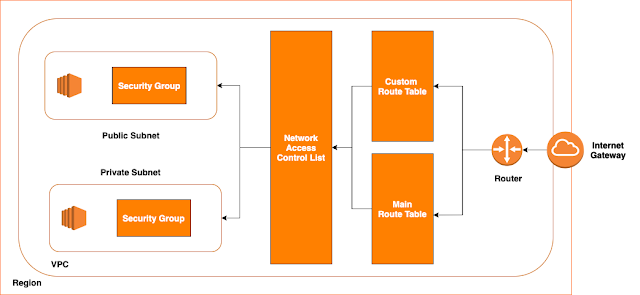AWS Virtual Private Cloud(VPC) Architecture
Amazon Web Services (AWS) Virtual Private Cloud (VPC) is a virtual network that allows users to launch AWS resources in a logically isolated section of the AWS cloud. This isolation provides a high level of security, as well as the ability to customize the network configuration to meet the specific needs of your organization.
AWS VPC is made up of several key components, including:
Virtual Private Cloud (VPC): This is the main component of the AWS VPC architecture. It acts as a virtual network that you can launch your AWS resources in.
Subnets: A VPC is divided into one or more subnets, which are logical divisions of the VPC. Each subnet is associated with a specific IP range, and resources launched in a subnet are assigned an IP address within that range.
Internet Gateway (IGW): The IGW allows communication between the VPC and the internet. It acts as a bridge between the VPC and the public internet, providing a way for resources in the VPC to access the internet and for internet traffic to reach resources in the VPC.
Route Tables: Route tables are used to control the flow of network traffic within the VPC. They determine where traffic is directed and can be used to create custom network configurations.
Security Groups: Security groups are used to control access to resources in the VPC. They act as a firewall for the resources in the VPC and can be used to specify which inbound and outbound traffic is allowed.
Network ACLs (NACLs): NACLs are used to control access to subnets within the VPC. They act as a firewall for the subnets and can be used to specify which inbound and outbound traffic is allowed.
Elastic IP Addresses (EIPs): EIPs are static, public IPv4 addresses that can be associated with an instance or a network interface. They can be used to mask the failure of an instance or a network interface.
AWS VPC architecture provides a high level of security, scalability and flexibility, allowing users to create a network that meets the specific needs of their organization. With the ability to customize subnets, route tables, security groups, and network ACLs, users can easily segment their network and control access to resources.
Additionally, VPC provides a number of features such as VPN Connections, Direct Connect and VPC peering to easily connect your on-premises infrastructure with VPC and also you can securely connect multiple VPCs.
To summarize, AWS VPC architecture provides a powerful and flexible way to launch cloud resources and customize your network to meet your organization's specific needs. It is an excellent choice for organizations looking for a secure and scalable cloud-based network solution, as it includes a number of tools and features for controlling access and managing traffic.





Post a Comment